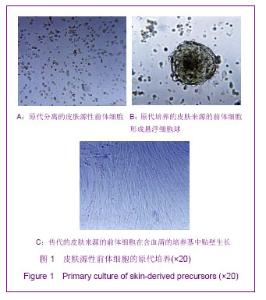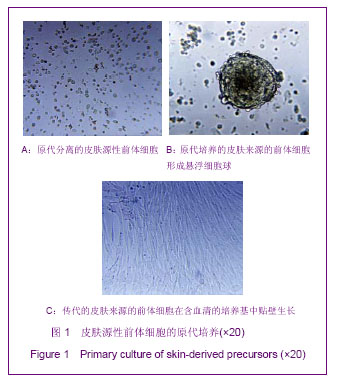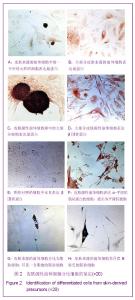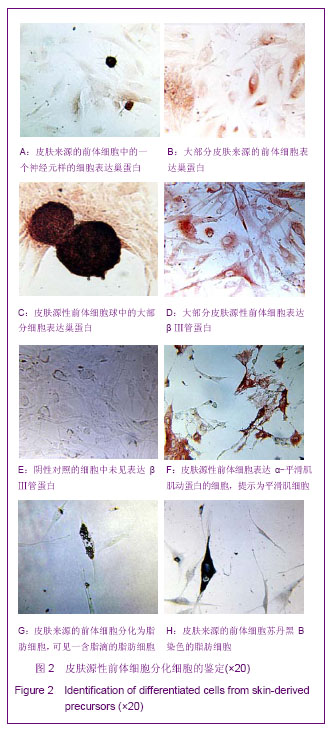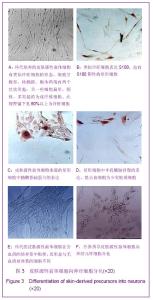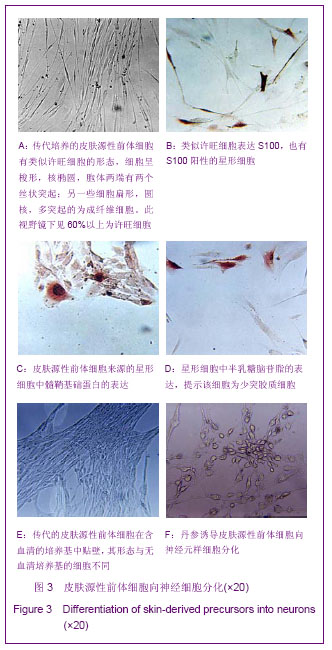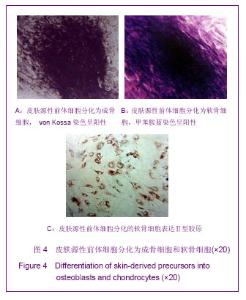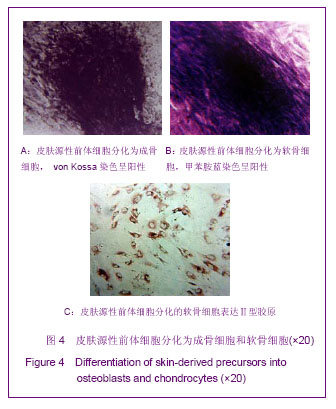| [1] Pittenger MF,Mackay AM,Beck SC, et al. Multilineage potential of adult human mesenchymal stem cells. Science. 1999; 284(5411):143-147.
[2] Zuk PA, Zhu M, Mizuno H, et al. Multilineage cells from human adipose tissues: Implications for cell-based therapies. Tissue Engineering.2001; 7(2):211-226.
[3] Toma JG, Akhavan M, Fernandes KJ, et al. Isolation of multipotent adult cells from the dermis of mammalian skin. Nat Cell Biol.2001;3(1):778-784.
[4] Toma JG, McKenzie IA, Bagli D, et al. Isolation and characterization of multipotent skin-derived precursors from human skin. Stem Cells.2005;23(6):727-737.
[5] Yang LY, Zheng JK, Liu XM, et al. Culture of skin-derived precursors and their differentiation into neurons. Chin J Traumatol.2004;7(2):91-95.
[6] 杨立业,刘相名,惠国桢,等.丹参诱导骨髓间充质细胞向神经元分化[J].中华神经外科疾病研究杂志,2003,2(1):29-32.
[7] 刘桂英,杨立业,郑佳坤,等. 来源于脂肪组织的基质细胞向成骨细胞分化[J]. 实用口腔医学杂志,2003,19(6):554-557.
[8] 杨立业,郑佳坤,惠国桢. 脂肪组织来源的基质细胞研究进展[J].中国修复重建外科杂志,2004,18(4):347-350.
[9] Amoh Y, Li L, Katsuoka K, et al. Multipotent nestin positive, keratin negative hair follicle bulge stem cells can form neurons. Proc Natl Acad Sci U S A, 2005,102(15):5530-5534.
[10] Hunt DP, Morris PN, Sterling J, et al. A highly enriched niche of precursor cells with neuronal and glial potential within the hair follicle dermal papilla of adult skin. Stem Cells.2008;26(1): 163-172.
[11] Gingras M, Champigny MF, Berthod F.Differentiation of human adult skin- derived neuronal precursors into mature neurons. J Cell Physiol.2007;210(2):498-506.
[12] Yang LY, Liu XM, Sun B, et al.Adipose tissue-derived stromal cells express the phenotypes of neurons. Chin Med J.2004; 117(3): 425-429.
[13] Freed CR, Greene PE, Breeze RE, et al. Transplantation of embryonic dopamine neurons for severe Parkinson's disease. New Engl J Med.2001;344(10):710-718.
[14] Biernaskie J, Sparling JS, Liu J, et al.Skin-derived precursors generate myelinating Schwann cells that promote remyelination and functional recovery after contusion spinal cord injury. J Neurosci.2007;27(36):9545-9559.
[15] McKenzie IA, Biernaskie J, Toma JG, et al. Skin-derived precursors generate myelinating Schwann cells for the injured and dysmyelinated nervous system.J Neurosci.2006; 26(24): 6651-6660.
[16] Tunici P, Bulte JW, Bruzzone MG, et al. Brain engraftment and therapeutic potential of stem/progenitor cells derived from mouse skin. J Gene Med.2006;8(4):506-513. |
